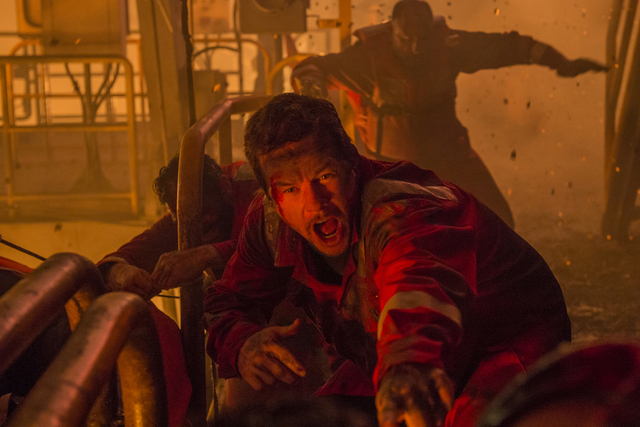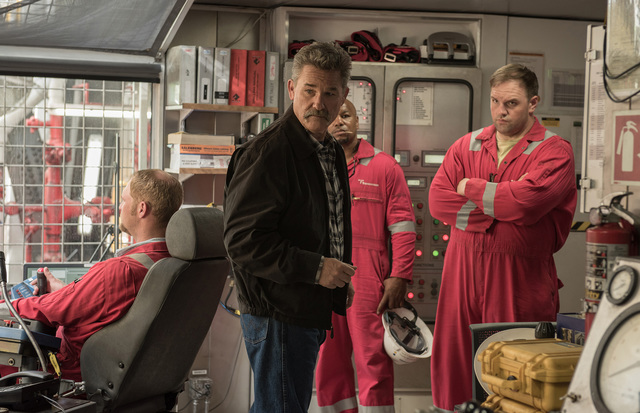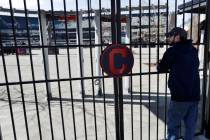‘Deepwater Horizon’ paints murky picture of BP oil rig disaster


The makers of “Deepwater Horizon,” the new drama focusing on the 2010 disaster on the titular offshore drilling rig, decided to keep things simple with its name.
Presumably because “BP Is Made Up of a Bunch of Penny-Pinching Weasels Whose Scrapping of a $125,000 Test Led to the Deaths of 11 Men, Ravaged the Louisiana Coastline With 4.9 Million Barrels of Oil and Ultimately Cost the Company $61.6 Billion” wouldn’t easily fit on a poster.
At least that’s the takeaway from the science lesson/action spectacle directed by Peter Berg (“Lone Survivor”) from a script by Matthew Michael Carnahan (“World War Z”) and Matthew Sand (“Ninja Assassin”).
Based on the New York Times article by David Barstow, David Rohde and Stephanie Saul that was compiled from interviews with 21 survivors, “Deepwater Horizon” spends its first half doing its best to explain what’s about to go wrong and its second half covering a bunch of actors in mud and oil as they run around in cramped quarters while things blow up all around them.
Despite its best intentions, neither half makes much sense.
“Deepwater Horizon” mostly focuses on technician Mike Williams (Mark Wahlberg) and his boss, “Mr. Jimmy” Harrell (Kurt Russell), employees of Transocean, the Swiss company that owned the Deepwater Horizon and leased it to BP.
After the helicopter flight that takes them to the Deepwater Horizon, 41 miles off the coast of Louisiana, Mike and Mr. Jimmy spend 10 minutes cursing BP officials — specifically Donald Vidrine (John Malkovich) — for not running a cement test that will prove, well, something. Vidrine then boasts that being cheap is what made BP a $186 billion company.
Mr. Jimmy at least convinces the BP officials, who are trying to cut corners because the project is 43 days and $50 million over budget, to run something called a negative pressure test on the drill pipe. When that test is inconclusive, Vidrine suggests they run the same test on the kill line.
I still have no idea what any of that means. Despite spending so much time and effort trying to explain things, most of “Deepwater Horizon’s” dialogue boils down to, “We’ve gotta (something) the (something) before (something) happens.”
Anyway, soon after Mr. Jimmy signs off on the kill line assessment with a sadly naive “It never hurts to run a test,” a barrage of mud and oil begins flinging workers everywhere. Rivets are turned into shrapnel. Before long, the entire rig is engulfed in flames.
Berg includes plenty of shots of crew members doing what seem to be heroic things. But it’s hard to overstate just how difficult it is to make much sense of what’s happening.
Especially during the second half, when the main difference between “Deepwater Horizon” and a Michael Bay movie is that, in the latter, Andrea Fleytas (Gina Rodriguez), the only woman on the Deepwater Horizon, would have traded in her polo shirt and khakis for a skimpy tank top, Daisy Dukes and a pair of cowboy boots.
“Deepwater Horizon” means well. It’s both an attempt to explain the root cause of one of the world’s worst man-made disasters and salute the heroism that took place on that fateful day.
Unfortunately, though, it muddies the waters on both counts.
Contact Christopher Lawrence at clawrence@reviewjournal.com. On Twitter: @life_onthecouch.
Review
Movie: “Deepwater Horizon”
Running time: 107 minutes
Rating: PG-13; prolonged intense disaster sequences and related disturbing images, and brief strong language
Grade: C
Now playing: At multiple locations












